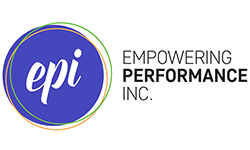Get Personal: Stories in Elearning
As a story coach for seven years, I spent my days listening to the unique experiences of all sorts of community members. From veterans to cancer patients, small business owners to teens, I heard about countless, poignant moments. Holding the hand of a sick loved one. A first “I love you." Opening the enlistment letter. And on and on. It was rich and it was human.
Stepping into the training world, I was eager and excited to bring the power of story (hoorah!). And I’d also emotionally conceded that storytelling in training would mean shelving some of the human, some of the personal. But after a few months in the industry, I quickly discovered ꟷ remembered, really ꟷ that nothing should be conceded.
In fact, what makes an impactful story in an onboarding training is no different than what makes a compelling WWII veteran’s biography. It’s all about…
harnessing the personal.
Harnessing the personal isn’t about being “touchy-feely.” And in the “custom learning solution” industry, personalizing is actually the implied promise we make to clients. It’s our promise that we’ll tune into the unique moments, atmosphere, and personalities that define the client and their culture, employees, and services.
Whether we're using stories or other design treatments, infusing the work with the personal ensures that it stays culturally-relevant. It’s a no-brainer method for improving course quality, boosting learner engagement, and triggering on-the-job "remembering."
So, when you do use stories, how can you make them personal?
From scenarios to immersive “choose your own adventure” courses, and everything in between, stories take many forms in elearning. And regardless of the story type you’re using, knowing which details and descriptions to use - and where - is key to crafting a personalized story with a punch. Here are just a few reasons why rich description is critical to story craft:
Relatability. Well-used details create relatability for a character. All good stories have characters who are human, fallible, and relatable to the audience.
Story context. All good stories rely on well-placed details to provide enough cognitive and subconscious cues to help an audience easily understand the where, what, who, when, why, and how.
Emotions and beliefs. Story details are what activate the listener’s emotions and beliefs. Well-told stories (as opposed to straight delivery of facts) trigger the emotional centers of the brain, which activate old, “shelved” stories, subconscious belief systems, and behavior change.
What’s more, the metaphors and sensory details literally make a story come alive in a listener’s brain.
From this perspective, the brain doesn’t know the difference between an actual lived experience and a story experience. In fact, research continues to show how neural coupling or “brain-to-brain communication” occurs during storytelling, meaning the story listener’s brain lights up in the same regions as the storyteller’s brain.
We shiver when someone uses the fingernails-scratching-down-a-chalkboard metaphor, which is a perfect reminder of how descriptions can trigger sensory experiences in the brain and body in countless cognitive and subconscious ways.
But here’s the caveat: details – too many or too few – can derail an elearning story.
Instead of creating immersion and relatability, they can create cognitive overload or confusion, depending on the learner. This can lead to lower retention rates or disengagement in a learning context. So, how can you use well-placed details to craft the best possible version of a story for an elearning course?
Know how to gather the most impactful details.
Use the details strategically.
Stay tuned for Part 2. We’ll discuss how to gather details to ensure you’re using the power of personalization effectively in your courses.
Katherine Mullin, Learning Solutions Architect




